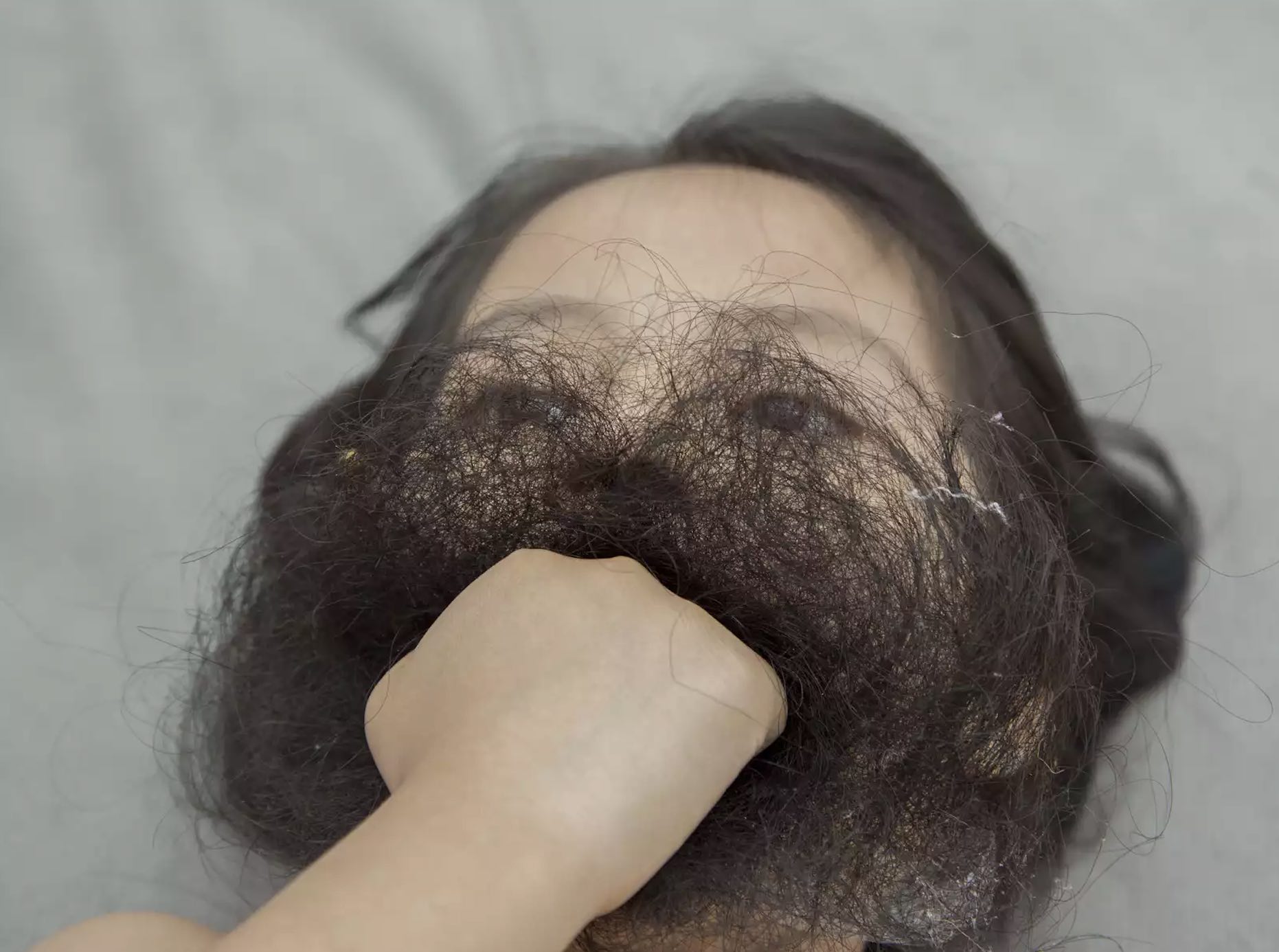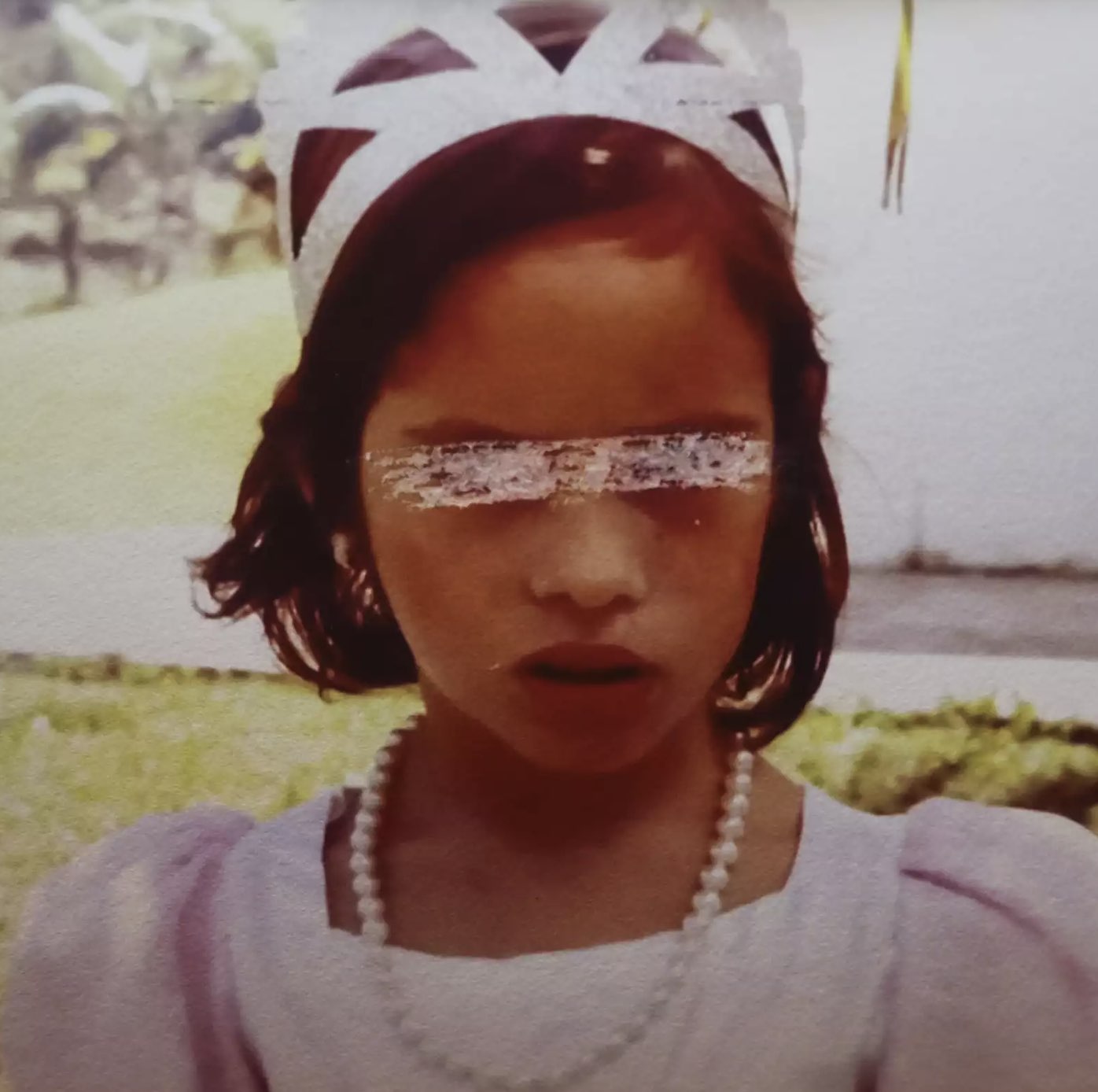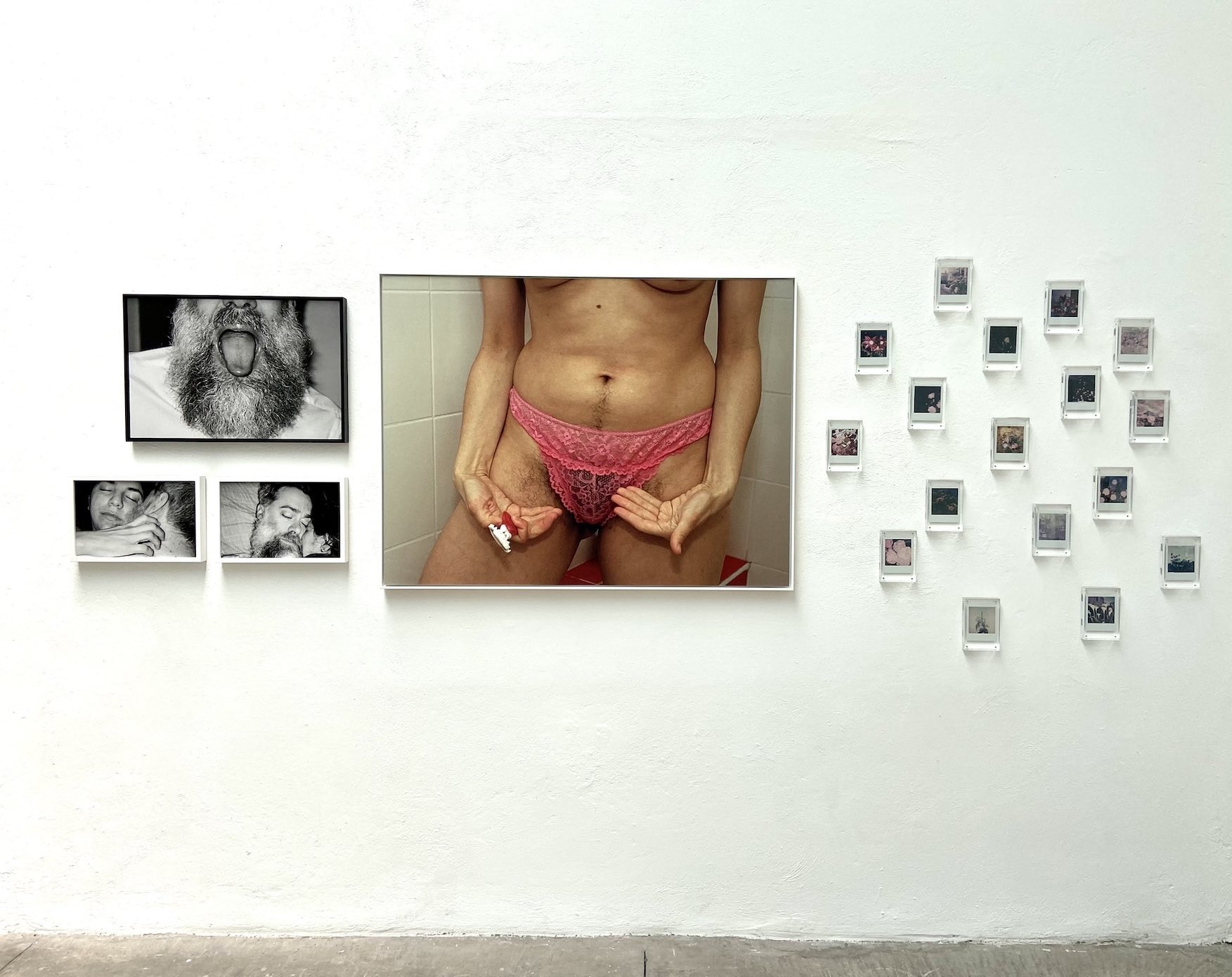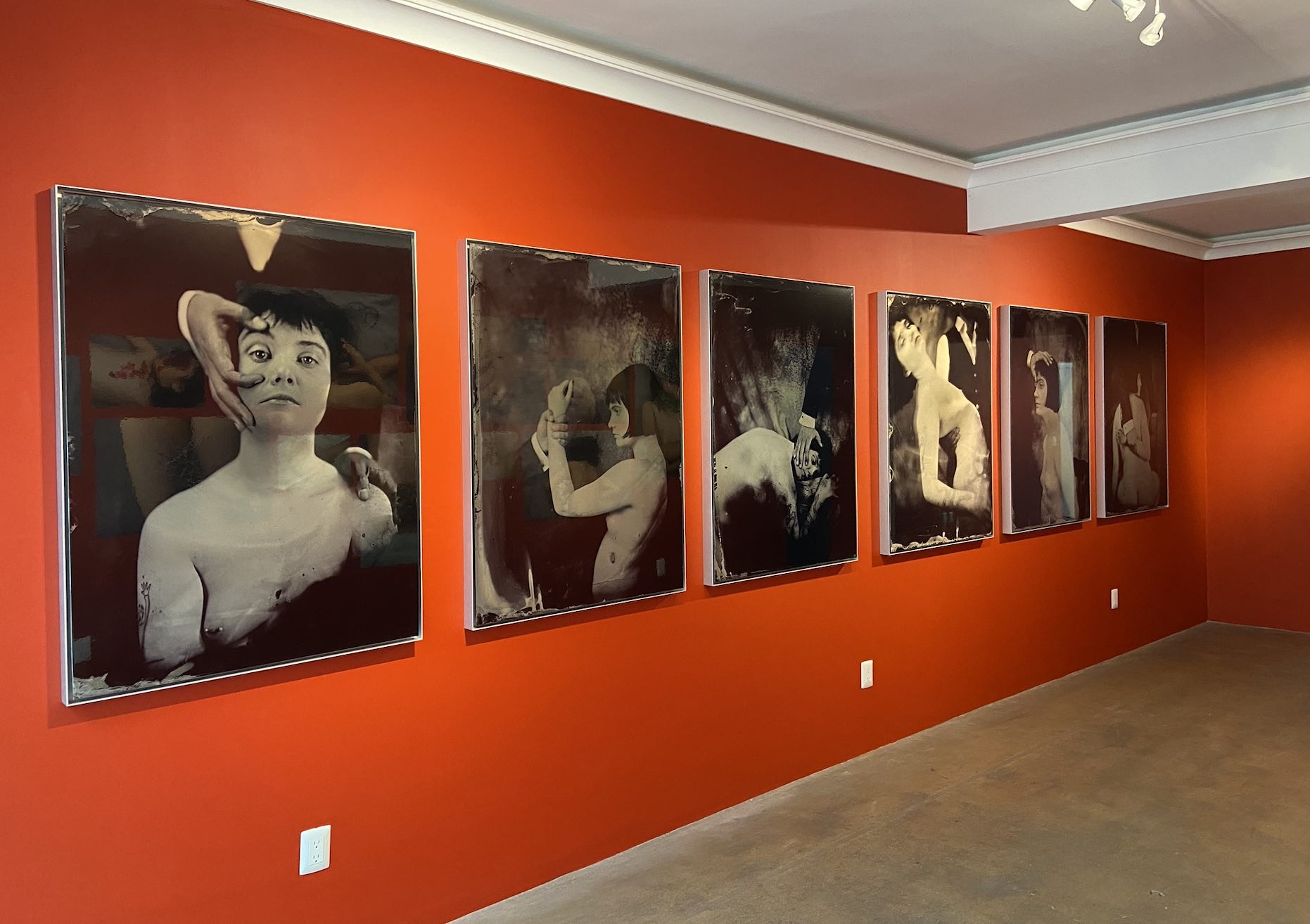
Essay
Trauma, Play, and Discretion: On 'Rehabitar el silencio'
by Stefanía Acevedo
At Patricia Conde Galería
Reading time
6 min
How is a feminist gaze formed? Or rather, let’s try without adjectives: How is a gaze formed that at once manages to question our own embodied cognition and to expose itself as an image? Three Mexican female photographers unite to engage in a dialogue about exactly these conundrums in Rehabitar el silencio [Reinhabiting the Silence], an exhibition curated, in turn, by the gaze of another photographer: Paola Dávila.
“Reinhabiting” implies a recognition of our feminine bodies [“nuestras cuerpas”] as the original space where our movements and forms are molded, as well as where signs of submission are impregnated. Nevertheless, the prefix “Re” also establishes the possibility of subverting all those cultural markings that have historically entailed the silence of women and the invisibility of their work. Thus, the fact that Dávila has brought together the work of female photographers furthers a struggle—not yet won—for women to have exhibition spaces.
And yet, how can we designate ourselves and avoid reproducing once again those classic logics of exclusion, domination, and ontological hierarchy, operating more-or-less according to impositions of certain characteristics? To speak personally, I like to rehabilitate myself with a basis in play—sometimes tactical play—between the “a” [a Spanish word’s feminine ending] and the “x” [a gender-neutral ending], something that always depends on the context and the battle. Even though in the “x” what’s lost is the binarism of those essences opposed to each other with their defined contours and limits, I can’t escape the resonances of the “cuerpas” featured in each of this exhibition’s photos. There’s a tension: I resist fixing this “a” as a space of certainty regarding the experience of what it is to be a woman and what it means to inhabit a “cuerpa.”

That question already finds its place in Tania Bohórquez’s series Trauma, in which “rehabilitating” amounts to insisting on a “cuerpx” in at least two registers:
a) In its capacities: making a “cuerpx” with other “cuerpxs.” In that place where we can only name singularities (hair, nails, earth, skin, red, stone). At the same time, it demonstrates the power and strength of ambiguity incarnated in the body of a child [niñx] who becomes a territory.
b) In its limits: where the suffering, pain, and trauma of bodies that have been marked by incest take place. Testimonies of the unimaginable—not in the sense that they lack images, but because as a society we prefer not to see or hear them. Well, isn’t culture supposed to be upheld precisely by the prohibition of incest? That’s where we find the silence. We are faced with an unfolding of sexuality where the power exercised over a feminine body [“cuerpa”] can only be understood as rape, and yet Bohórquez does not invoke that word. Perhaps it’s because what interests her is collecting the testimony of those traumas from other semantic possibilities that might give another place to suffering.
Rehabitar el silencio is a photography exhibition, but we also find its transformation into other formats. Thus, Ana Blumenkron’s (self-)investigation seeks its outlet as both fanzine (Play Date) and video, mediums accompanying the narrative of a constellation of polaroids and sexting. Blumenkron reminds us of the playful part of reinhabiting, where, in the manner of a Journal or Diary, what’s created is an intimate space made up of aspects of everyday life where we are diverse beings, we contradict ourselves, we play, and we love. More than one of us recognize ourselves in that diary where we confess that—once again—we put our energy and expectations into a heterosexual and monogamous relationship with a macho [onvre]. There the space of vulnerability opens up: knowing oneself (not) in love, (dis)illusioned, and with insecurities about how others perceive us. Nevertheless, that vulnerability is also a space for that humor and lightness coming from knowing how to laugh at ourselves and at our setbacks.

An imaginary thread is woven from the contemporary macho [onvre] portrayed in Blumenkron’s work to the figure of the macho [onvre], synthesized in a pair of hands, in the work of Sylvana Burns. In Dissected, the photographer creates a series of classic images, in black and white, that invoke silent movies and that, in turn, show us the history of patriarchal structures, as well as the marking of positions and hierarchies. I repeat: classic images in which one body dominates another. I admit that “classical” isn’t the best word for referring to all the effects generated by a culture of patriarchal domination. The word is too discrete. Fortunately, Burns’s photos can tell us more: if one approaches them we can see marks, as if the paper were damaged, wrinkled, or intervened-on by a punch. Although this might owe to the photographic technique, I can’t help but see in it a gesture inviting us to destroy those patriarchal hierarchies and to shatter those old representations. We’ll indeed have to destroy the macho imaginary that appears in these photos, without a face—it could really be anyone—but with hands that exercise control and domination in a severe, pristine, and, yes, discrete manner. We’ll also need to dismantle the imaginary of the submissive, suffering, delicate, and complacent woman—and even ask once again what it means to be a woman. The classic must be shattered.

In this territory that we inhabit, where the effects of patriarchal violence take the lives of ten women a day, it becomes urgent to denounce aggressions against women, but, above all, the indifference that entails becoming habituated to this form of domination: thus refusing to turn all this into classic images. There are many fronts for preventing this from continuing to be silenced. If at first I asked, “How is a feminist gaze formed?” now I can venture a response. Incarnating the experience of being a “cuerpa,” which entails recalling that in that “a” there are many other possible experiences, where we can defend ourselves and fight collectively because our lives are at risk.
Rehabitar el silencio is being presented at Patricia Conde Galería and will remain open until August 20.
Translated to English by Byron Davies
Published on July 31 2022